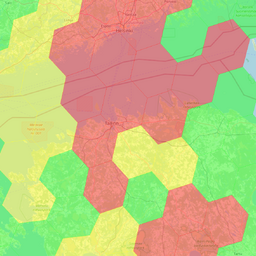Venemaal Eesti piiri lähedal on uus segaja põhjustanud suuremaid
GPS-häireid
.
GPS-häireid
Tõlge fraasile: GPS-häireid
EN
GPS interference
Õhutransport ja meretransport on siiski turvalised, sest neil on
teised navigatsioonivahendid
, mis töötavad ilma GPS-signaalita.
teised navigatsioonivahendid
Tõlge fraasile: teised navigatsioonivahendid
EN
other navigation tools
Läänemere piirkonnas on kaks suuremat häirete piirkonda: Kaliningrad ja Peterburi. Viimasel ajal on tekkinud uus segaja, mis mõjutab eelkõige
droonide lennutamist
Narva ümbruses
ja
Narva lahe rannikualadel
.
droonide lennutamist
Tõlge fraasile: droonide lennutamist
EN
drone flying
Narva ümbruses
Tõlge fraasile: Narva ümbruses
EN
around Narva
Narva lahe rannikualadel
Tõlge fraasile: Narva lahe rannikualadel
EN
in Narva Bay coastal areas
GPS-häired võivad mõjutada
droonide lennutamist
idapiiri äärsetel aladel, kuid kesk- ja lääne-Eestis neid peaaegu ei ole.
droonide lennutamist
Tõlge fraasile: droonide lennutamist
EN
drone flying
Politsei ja piirivalve on kehtestanud idapiiri läheduses droonidele
viiekilomeetrise lennukeelu ala
. See aitab vältida õnnetusi, mis võivad olla ohtlikud inimeste elule ja varale.
viiekilomeetrise lennukeelu ala
Tõlge fraasile: viiekilomeetrise lennukeelu ala
EN
five-kilometer no-fly zone
GPS-häireid
on märgatud rohkem alates 2023. aasta juunist. Need häired on märgatavad kõrgemal õhruumis, alates 5000 jalast, ja võivad mõjutada
lennukite asukohatäpsust
.
GPS-häireid
Tõlge fraasile: GPS-häireid
EN
GPS interference
lennukite asukohatäpsust
Tõlge fraasile: lennukite asukohatäpsust
EN
aircraft location accuracy
Segaja mõju saab lõpetada ainult selle välja lülitamisega. Tekhniliste vahenditega ei saa seda mõju neutraliseerida. Segaja asub Venemaa territooriumil.
Rahvusvaheline Telekommunikatsiooni Liit (ITU) reguleerib riikidevahelisi suhteid selles valdkonnas. Eesti ja Venemaa on mõlemad ITU liikmed.
GPS-häiringute teema on püsivalt ITU päevakorras. Lisaks on Rahvusvaheline Tsiviillennunduse Organisatsioon (ICAO) kritiseerinud Venemaa GPS-häirimist meie piirkonnas.
Euroopa Liidu telekommunikatsiooniministrite kohtumisel mainiti, et Euroopa Liit vajab oma sõltumatut
satelliitsidesüsteem
i.
satelliitsidesüsteem
Tõlge fraasile: satelliitsidesüsteem
EN
satellite communication system
A new disruptor near Estonia's border with Russia has caused significant GPS interference.
Air and maritime transport remain safe as they have other navigation tools that work without GPS signals.
In the Baltic Sea region, there are two major interference areas: Kaliningrad and St. Petersburg. Recently, a new disruptor has emerged, primarily affecting drone flights around Narva and the coastal areas of the Gulf of Narva.
GPS interference may affect drone flights in areas near the eastern border, but it is almost non-existent in central and western Estonia.
The police and border guard have established a five-kilometer no-fly zone for drones near the eastern border. This helps prevent accidents that could be dangerous to human life and property.
GPS interference has been observed more frequently since June 2023. These interferences are noticeable at higher altitudes, starting from 5,000 feet, and may affect aircraft position accuracy.
The impact of the disruptor can only be stopped by turning it off. Technical means cannot neutralize this effect. The disruptor is located on Russian territory.
The International Telecommunication Union (ITU) regulates international relations in this field. Estonia and Russia are both members of the ITU.
The issue of GPS interference is permanently on the ITU agenda. In addition, the International Civil Aviation Organization (ICAO) has criticized Russia's GPS interference in our region.
At the meeting of EU telecommunications ministers, it was mentioned that the European Union needs its own independent satellite communication system.

